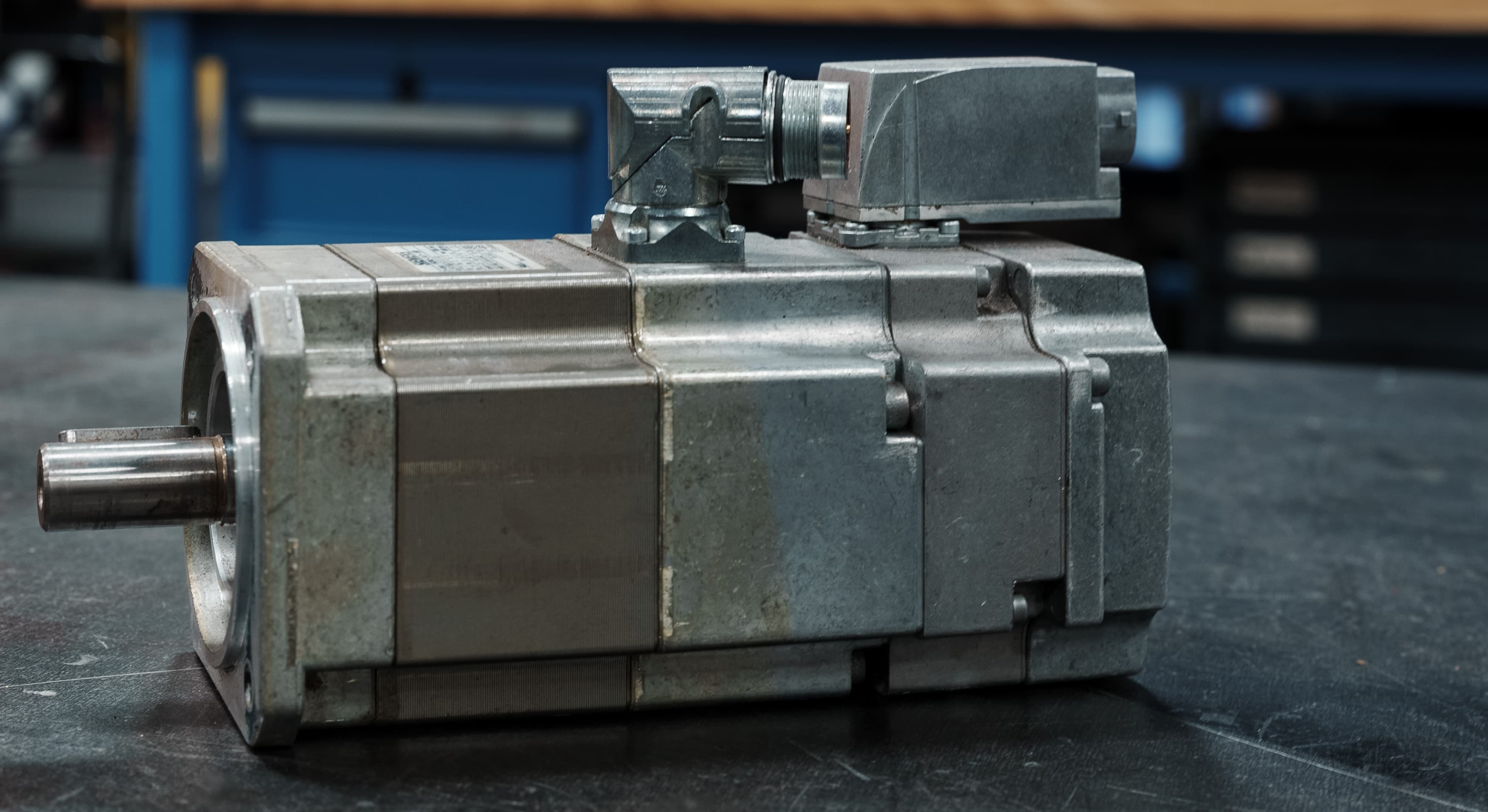
What is a Servo Motor
Go inside the housing. See the parts that matter. Understand how it works—and why it's critical to motion control.

Go inside the housing. See the parts that matter. Understand how it works—and why it's critical to motion control.
A servo motor can be AC or DC, water-cooled, air-cooled, or uncooled. Some integrated with the motor and drive together.
The feedback converts a shaft's rotary or linear motion into an analog or digital output signal to identify speed, direction, and distance. Because it's closed-loop, we know the motor's position.
It's part of the 'Big 3' that makes a motion control system. The servo drive is configured with parameters to send commands, the motor acts, and the feedback sends the information back; the drive can adjust.
There are many protocols, and the feedback can vary, with resolver and encoder being the most common.
Let's dive into the inner workings, the parts that make up a servo motor.

Housing
Solid aluminum housing keeps the inside protected. Built to come apart—and go back together.
End Bells
Precise cuts and grooves make a home for the bearings. You'll also find the wave washer opposite the pulley end (OPE) here.
The wavelike design lubricated on one end protects the surface and applies the proper bearing preload.
Motor Shaft
The motor shaft is typically made of hardened steel, with or without a keyway, to transmit torque.
Bearings
Replace bearings every 20,000–30,000 hours under normal conditions—nominal speed and rated load—or sooner if there's noise or vibration.
Servo motor bearings run quietly, resist fretting, and use high-performance grease. SKF, NSK, and NTN are household names.
Your feedback device could even have a bearing, albeit smaller. Some, like Heidenhain ECI/EQI 1300, are bearingless.
Rotor
Attached to the shaft and wedged between two bearings, the rotor is the movable part of the servo motor. Ultrathin layers of magnetic steel laminations make up the rotor to create a permanent magnet.
Stator
The stator's energized windings create a magnetic field that attracts and repels the rotor, making it turn.
The one here comprises 12 connected coils made from Pulse Shield inverter-duty magnet wire.
Encoder
Most OEMs use a coupler and bushing to secure the encoder to the motor—simple yet effective.
The encoder is an electro-mechanical device. Pictured here is an A48 absolute from a Mitsubishi HF with 260,000 pulse/rev.
Encoder disc, photodetector, and electronic board are the main components.
Brake
The brake disengages when voltage, usually 24Vdc or 48Vdc, is applied, so take extra caution. Things will drop.
Most are spring-applied. The brake holds when the power is off, hence the name. Some call them failsafe and holding.
Snap Ring
Without it, you'd have an 'oh, snap' moment. Even after a direct hit or nudge, the shaft position will hold.
MPC Spacer
The spacer holds the motor power connector, while the gasket seals the joint between the connector and spacer.
Bearing Journal
Where the bearing mounts onto the shaft itself, with a micrometer (µm) tolerance.
Bearing Plate
Hold the bearing; it keeps from slipping out of place.
O-ring
Multiple O-rings, gaskets, and seals—typically polymer—form a tight seal.